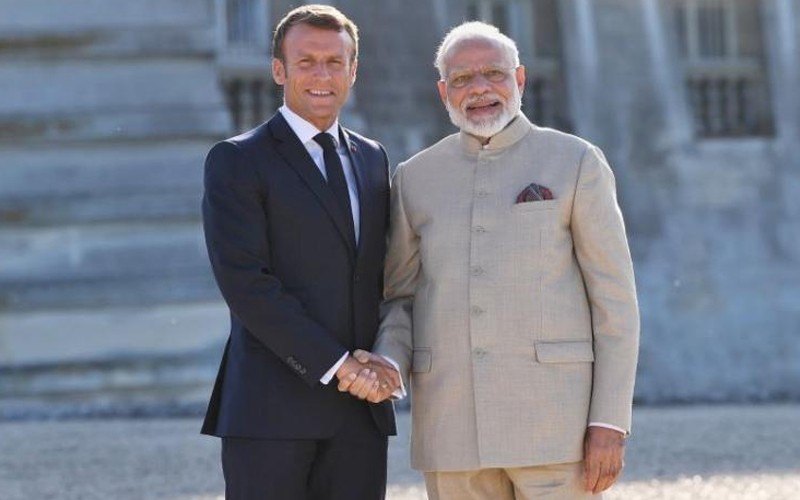'Welcome but too late': Chidambaram on Modi govt's GST simplification

New Delhi/IBNS: Union Finance Minister P Chidambaram has welcomed the Centre's simplification of the GST structure but said the action was taken "too late".
Chidambaram posted on X, "The GST rationalisation and the reduction in rates on a range of goods and services are WELCOME but 8 years TOO LATE The current design of GST and the rates prevailing until today ought not to have been introduced in the first place
"We have been crying hoarse for the last 8 years against the design and rates of GST, but our pleas fell on deaf years It will be interesting to speculate on what drove the government to make the changes: Sluggish growth? Rising household debt? Falling household savings? Elections in Bihar? Mr Trump and his tariffs? All of the above?"
The GST rationalisation and the reduction in rates on a range of goods and services are WELCOME but 8 years TOO LATE
— P. Chidambaram (@PChidambaram_IN) September 3, 2025
The current design of GST and the rates prevailing until today ought not to have been introduced in the first place
We have been crying hoarse for the last 8…
The decisions were taken at the 56th GST Council meeting held on Wednesday, which reviewed rate revisions and category adjustments across a wide range of products under the indirect tax system.
The reforms, set to take effect from September 22, are expected to significantly lower household expenses.
"For common man and middle class items, there is a complete reduction from 18% and 12% to 5%. Items such as hair oil, toilet, soap bars, soap bars, shampoos, toothbrushes, toothpaste, bicycles, tableware, kitchenware and other household articles are now at 5%," Sitharaman said.
"UHT milk, paneer, all the Indian breads will see nil rate," she added.
Daily-use goods: Ghee, nuts, bottled water (20 litres), footwear, medicines, medical devices, pencils, bicycles, umbrellas and hairpins have been shifted from 12% to 5%.
Milk products: UHT milk becomes tax-free, while condensed milk, butter, ghee, paneer and cheese are now in the 5% or nil category.
Staples: Malt, starches, pasta, cornflakes, biscuits, chocolates and cocoa products drop from 12–18% to 5%.
Dry fruits and nuts: Almonds, cashews, pistachios, hazelnuts and dates move from 12% to 5%.
Sugar and confectionery: Refined sugar, syrups, toffees and candies are taxed at 5%.
Packaged foods: Vegetable oils, edible spreads, meat and fish products, sausages and malt-based foods reduced to 5%.
Snacks: Bhujia, mixtures, chabena and similar packaged items drop from 12% to 5%.
Drinking water: Mineral, natural and aerated water without sugar or flavour cut from 18% to 5%.
Fertilisers and crop inputs: Reduced from 12–18% to 5%.
Health products: Life-saving drugs, medical devices and allied items reduced to 5% or exempted.
Education: Books, learning aids and similar items fall to nil or 5%.
Electronics: Entry-level appliances move from 28% to 18%.
Footwear and textiles: Down from 12% to 5%.
Paper: Certain grades made tax-free.
Personal care: Hair oil, shampoo, toothpaste and dental floss slashed from 18% to 5%.
Energy and construction: Renewable energy equipment, building materials and allied items cut to 5%.
Others: Sports goods, toys, leather, wood products and handicrafts shifted to 5%.
What stays costlier
Sin goods: Pan masala, gutkha, zarda, bidis and cigarettes remain under high GST plus cess until cess borrowings are fully repaid. Valuation will now be linked to retail sale price rather than transaction value to prevent leakages.
Sugary drinks: Flavoured and aerated beverages will see GST raised from 28% to 40%.
Luxury items: Cigarettes, premium liquor and high-end cars stay in the 40% bracket. Imported armoured sedans will be exempt only when purchased for official state use, such as by the President’s Secretariat.
Coal: Taxed higher at 18%, up from 5%, raising costs for coal-reliant industries.
Restaurants: Those in specified premises will no longer be allowed the 18% rate with input tax credit.
Lotteries and intermediary services: Revised valuation rules will keep their tax burden unchanged.
Relief on health insurance
The Council has exempted health insurance premiums from GST, eliminating the earlier 18% levy.
This is expected to increase coverage in a country where fewer than 20% of citizens have private health policies.
While widely welcomed by insurers and policyholders, several states flagged potential revenue losses.
The GST Council also removed Goods and Services Tax on individual life insurance policies as part of its wider overhaul of the indirect tax framework.
Under the revised structure, effective September 22, all individual health covers—including family floater plans and senior citizen policies—will also be exempt from GST.
This exemption will make purchasing health or life insurance more affordable for consumers.
“Many MPs questioned taxing insurance premiums. We'll make sure benefits of insurance GST reforms is passed on to families, individuals,” said Nirmala Sitharaman.
Relief for small cars, bikes
As part of Wednesday’s GST restructuring, small cars and motorcycles with engines below 350cc have received a 10 percentage point tax cut. They now fall into the 18% bracket following the scrapping of the 28% slab.
According to a chart shared by Prime Minister Narendra Modi, small cars are defined as petrol vehicles with engines up to 1200cc, or diesel variants up to 1500cc, with a maximum length of 4000 mm.
In contrast, motorcycles above 350cc and larger cars will be placed in the new 40% luxury goods slab once the revised rates take effect on September 22.
Electric vehicles will continue to attract just 5% GST.
Economic backdrop
The rationalisation coincides with rising trade concerns after global tariff hikes, including a recent 50% levy on Indian exports. Despite these pressures, analysts remain confident that domestic consumption will drive growth.
Industry bodies, including the Confederation of Indian Industry (CII), welcomed the move, calling it timely for stimulating consumer demand and helping businesses adjust to tariff changes.
Experts said the changes could provide a significant boost to consumption and economic activity during the upcoming festive season.
Evolution of GST structure
Introduced on July 1, 2017, GST began with four tax rates—5%, 12%, 18% and 28%—alongside a compensation cess on luxury and demerit goods to help states meet revenue needs. The cess mechanism ended in June 2022.
With the Council now reducing GST to just two slabs, policymakers hope the simplified system will finally realise the original vision of affordability, efficiency and stronger consumption-led growth.




